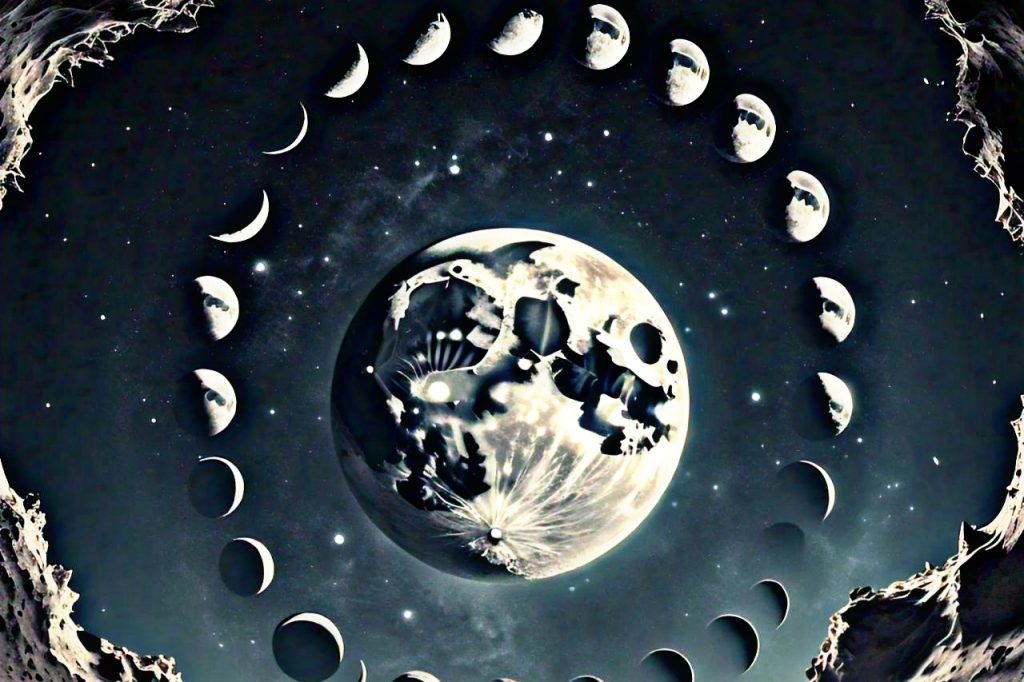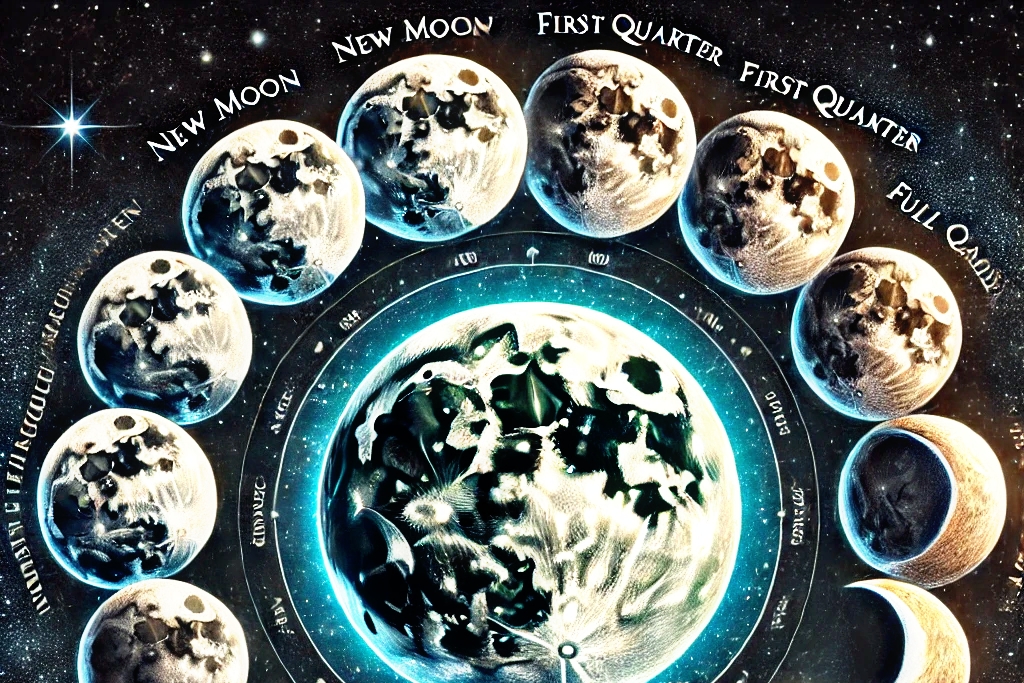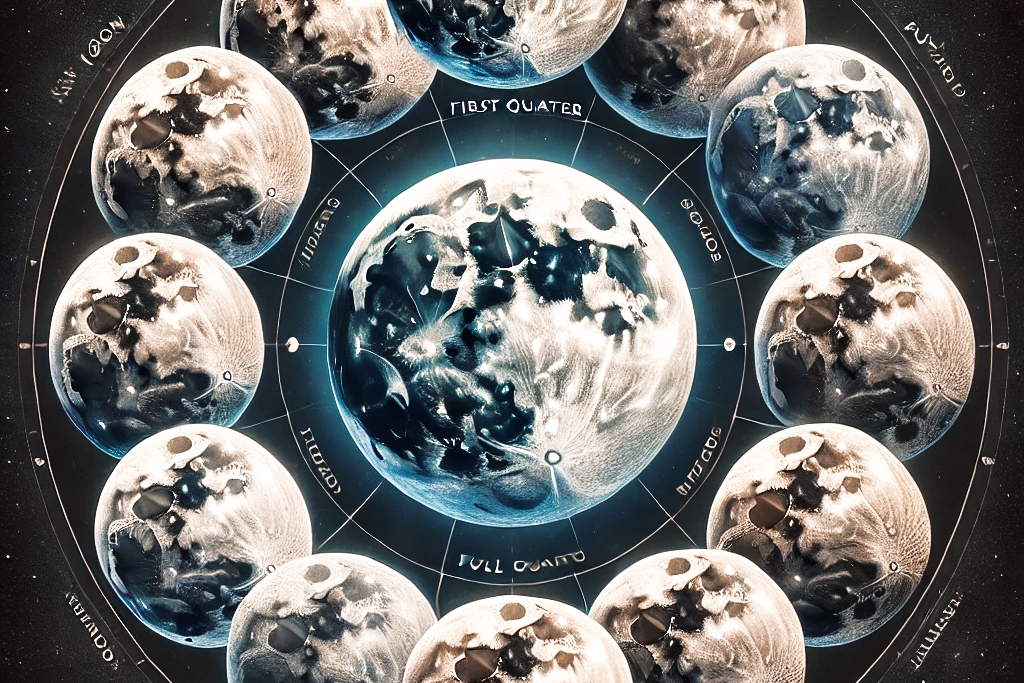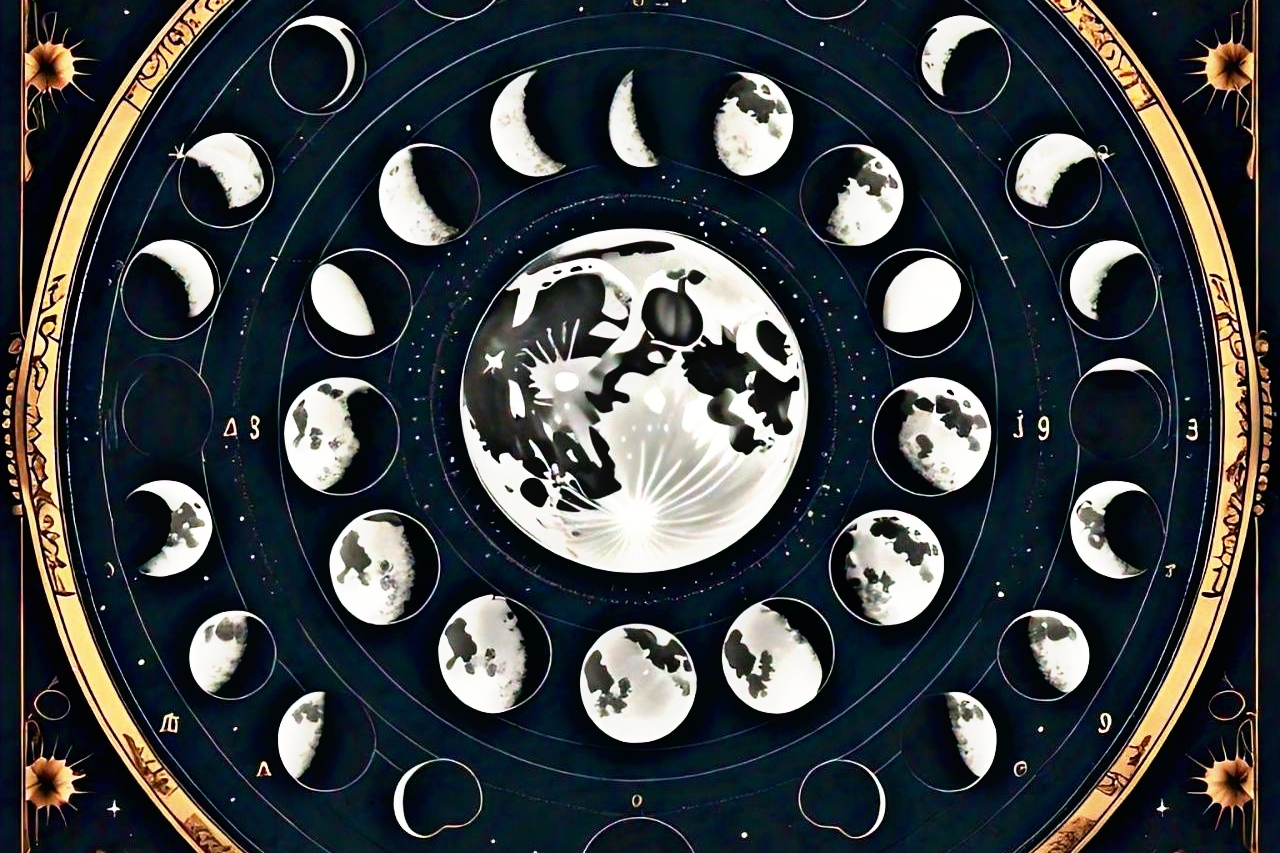The Moon, Earth’s natural satellite, has captivated humans for millennia. Its gravitational pull regulates ocean tides, its cycles guide many agricultural practices, and its luminous beauty has inspired poets, scientists, and spiritual seekers alike. Central to understanding the Moon’s influence on our planet is its phases, collectively referred to as “moon phases.” These phases are more than just captivating visual changes; they embody profound effects on various aspects of life, both on Earth and beyond.
In this comprehensive article, we will explore moon phases in depth: what they are, how they occur, their historical significance, their modern relevance, and their cultural, agricultural, and scientific applications. Let’s embark on this lunar journey.
What Are Moon Phases?

Moon phases refer to the changing appearances of the Moon as seen from Earth. These changes occur due to the Moon’s orbit around Earth and the relative positions of the Sun, Moon, and Earth. Depending on its position in this celestial dance, different portions of the Moon’s surface are illuminated, creating the distinct phases.
The Moon goes through eight primary phases during its 29.5-day lunar cycle:
- New Moon: The Moon is between Earth and the Sun, making the illuminated side invisible from Earth.
- Waxing Crescent: A sliver of the Moon begins to appear as it moves away from the Sun.
- First Quarter: Half of the Moon is visible as it continues its journey.
- Waxing Gibbous: The illuminated portion grows larger, nearing full visibility.
- Full Moon: The entire illuminated side faces Earth, creating a round, bright orb in the sky.
- Waning Gibbous: The light begins to decrease after the full phase.
- Last Quarter: Another half of the Moon is visible but on the opposite side compared to the first quarter.
- Waning Crescent: A thin sliver of light remains before returning to the New Moon phase.
These phases repeat cyclically, influencing tides, wildlife behaviors, human activities, and cultural practices.
The Science Behind Moon Phases

The Moon’s phases occur because it reflects sunlight. The side facing the Sun is always illuminated, but as the Moon orbits Earth, our view of the illuminated portion changes. Here’s a breakdown of the science:
- Orbit and Illumination: The Moon orbits Earth approximately every 27.3 days, but due to Earth’s simultaneous orbit around the Sun, the lunar cycle (from New Moon to New Moon) takes about 29.5 days.
- Sunlight Reflection: The light we see from the Moon is sunlight reflected off its surface.
- Relative Positions: The angle between the Sun, Earth, and Moon determines the phase we see.
Understanding this dynamic relationship sheds light on phenomena like solar and lunar eclipses, which occur when the Moon aligns precisely with the Sun and Earth.
Moon Phases in History and Culture
Throughout history, moon phases have been a source of mystery, guidance, and reverence. Ancient civilizations closely observed the Moon, integrating its phases into their calendars, rituals, and daily lives.
Calendars and Timekeeping
Many early calendars were lunar-based. The Islamic calendar, for example, is still strictly lunar, with months beginning at the first crescent of the New Moon. The Jewish and Chinese calendars also incorporate lunar cycles.
Agriculture and Fishing
Farmers and fishers have historically relied on moon phases for their practices. The Farmer’s Almanac, still in use today, suggests planting and harvesting crops based on lunar phases. Similarly, fishing communities observe moon phases to predict tidal movements and fish behavior.
Mythology and Folklore
Moon phases feature prominently in mythology. The Greeks associated the Moon with Artemis, the goddess of the hunt. In Hindu mythology, the phases of the Moon represent cycles of creation and destruction. Folklore often connects the Full Moon with increased activity, from werewolf legends to spikes in human behavior, though scientific evidence is mixed on the latter.
Moon Phases and Modern Life

In today’s world, moon phases remain significant, influencing science, spirituality, and even technology.
Scientific Applications
Astronomers and astrophysicists study moon phases to understand celestial mechanics, conduct lunar exploration, and refine models of Earth-Moon-Sun interactions. Moon phases also play a crucial role in space missions, dictating launch windows and mission timelines.
Health and Well-being
Some people believe that moon phases affect human health and behavior, although scientific consensus is limited. For example, the Full Moon is often associated with increased energy levels or sleep disturbances, while the New Moon is seen as a time for introspection.
Tides and Marine Life
The Moon’s gravitational pull creates ocean tides, which vary with its phases. Spring tides (higher high tides) occur during the New and Full Moons, while neap tides (lower high tides) occur during the First and Last Quarters. Marine animals like crabs and corals often synchronize their behaviors with moon phases, using them as cues for reproduction and migration.
Cultural and Spiritual Significance of Moon Phases
The Moon’s phases are deeply rooted in spiritual practices and cultural rituals worldwide.
Lunar Rituals
Many spiritual traditions align their rituals with moon phases. For example:
- New Moon: A time for setting intentions and starting new ventures.
- Full Moon: Associated with culmination, celebration, and heightened energy.
- Waning Phases: Seen as opportunities for reflection, release, and letting go.
Astrology
Astrologers view moon phases as significant influences on emotional and spiritual energy. The Moon is believed to govern intuition, emotions, and subconscious patterns. Lunar charts are often used to guide personal and collective decision-making.
Festivals
Lunar festivals, like the Chinese Mid-Autumn Festival and Hindu Karva Chauth, celebrate specific moon phases. These events highlight the Moon’s role in cultural heritage and community bonding.
Harnessing Moon Phases in Everyday Life
Understanding moon phases can enrich your daily life and decision-making. Here’s how you can incorporate them:
Gardening and Farming
- Plant leafy vegetables during the Waxing Moon for optimal growth.
- Harvest crops during the Waning Moon to preserve freshness.
Personal Growth
- Use the New Moon to set personal or professional goals.
- Reflect on achievements and release negativity during the Waning Crescent phase.
Creative Projects
Artists and writers often draw inspiration from moon phases, aligning creative bursts with the Full Moon and introspection with the Waning Crescent.
Travel and Exploration
The illumination provided by a Full Moon makes it ideal for nighttime activities like hiking or camping. Stargazers also benefit from knowing moon phases to observe celestial events without interference.
Fun Facts About Moon Phases
- Blue Moon: When two Full Moons occur in a single calendar month, the second is called a Blue Moon.
- Supermoon: A Full Moon appearing larger and brighter because it’s at its closest point to Earth (perigee).
- Lunar Eclipse: Only occurs during a Full Moon when Earth’s shadow blocks sunlight from reaching the Moon.
The Future of Moon Phase Exploration
As technology advances, our understanding of the Moon and its phases will deepen. Upcoming lunar missions, like NASA’s Artemis program, aim to establish sustainable human presence on the Moon, potentially making moon phases even more significant for space exploration and colonization.
Conclusion
Moon phases are far more than visual spectacles; they are a profound natural rhythm influencing life on Earth. From guiding ancient civilizations to shaping modern practices in science, spirituality, and daily living, the Moon’s phases hold enduring relevance.
By observing and understanding moon phases, we can reconnect with the natural world and find inspiration, guidance, and harmony in our lives. As the Moon continues its timeless dance with Earth and the Sun, its phases remind us of the cyclical nature of existence, offering endless opportunities for growth, reflection, and celebration.

